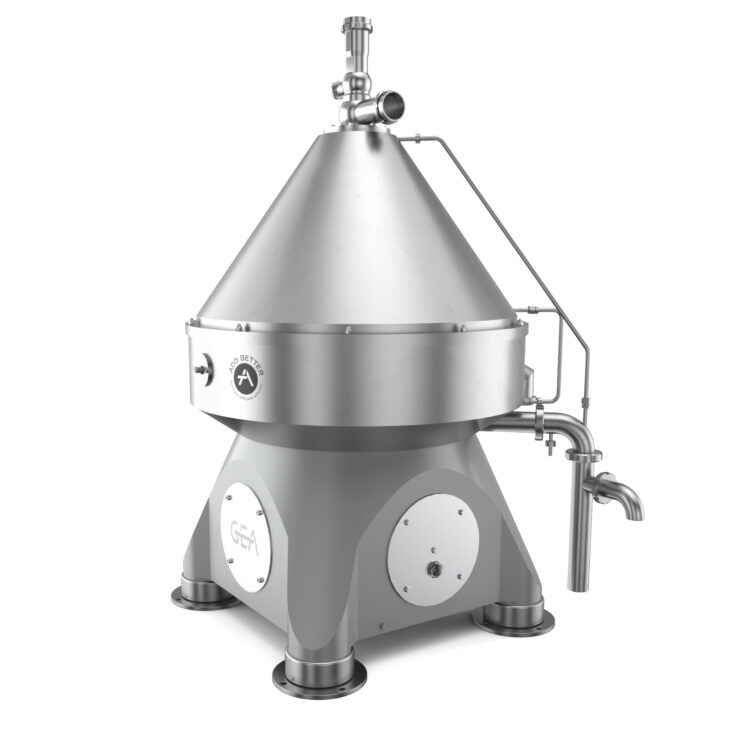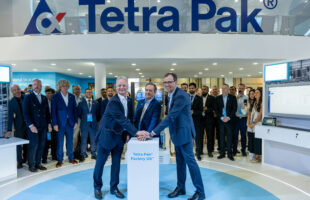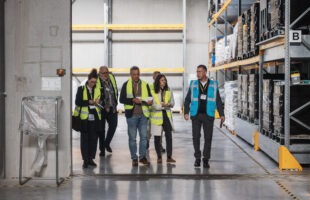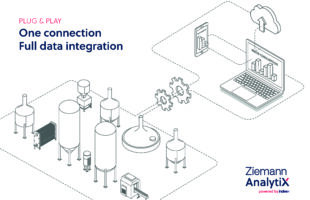
Courtesy of GEA
The dairy industry faces huge challenges: surging energy costs, the climate crisis, consumer trends, and a shortage of skilled labor. Integrated solutions are critical to overcoming these hurdles. In view of this, the innovative solutions presented by GEA at the Anuga FoodTec 2024 trade show will center on the water and energy consumed by a key technology for dairies – separators.
“Sustainability, connectivity, digitalization – we are stepping up to the plate, addressing these issues with tailor-made solutions,” confirms Christian Becker, Product Manager Separation Dairy at GEA. “Our customers need centrifuges that not only deliver maximum efficiency using minimal resources but are also able to function regardless of the operators’ skill level. Centrifuges have to become intelligent to work more sustainably and, going forward, autonomously.” The GEA separator innovations presented at the Anuga FoodTec trade show are helping dairies move in this direction.
Consistent output and low-energy drives for bacteria removal
Equipped with the latest drive generation, the GEA ecoclear i bacteria removal separator is ideally suited to small to medium-sized dairies. These businesses require cost-effective, service-friendly solutions that enhance dairy product quality and extend shelf life. Removing bacteria and spores from milk and whey is crucial for minimizing production losses and reducing waste, contributing to a more sustainable and profitable industry. The key innovation is the integrated direct drive. It transmits the drive power directly to the bowl, considerably reducing energy consumption. Nor does it require any transmission, belt, or coupling, which might reduce efficiency and be subject to wear and tear. Both spindle and engine are mounted in a drive cartridge and, as a modular exchange unit, can be easily maintained on site. The new integrated direct drive is now also available for the GEA ecocream i skimming and GEA ecoclean i clarifying separators.
Low running speeds reduce energy consumption by 40 percent
When weighing up capital expenditure against operating costs, high electricity and water prices are tipping the balance toward the latter. The sustainable line of GEA’s MSI skimming separators with GEA EngySpeed is catalyzing a paradigm shift in separator design. In place of smaller yet higher-speed centrifuges, which are still standard in many places, larger bowl volumes are now coming to the fore. For dairies, this means the same clarification area at lower speeds and using less power. Maintenance intervals are likewise extended – particularly for the drive assemblies – because the lower mechanical load causes significantly less wear on the drive. The EngySpeed system reduces the energy consumption of GEA’s MSI series milk skimmers by up to 40 percent. Rule of thumb: 10 percent lower speeds translate to 20 percent lower energy consumption.
Christian Becker cites the example of a medium-sized dairy from one of the target markets Poland: “If we go one machine size up for standardizing 25,000 liters of milk per hour, we require around 39 percent less energy. At approximately 6,000 operating hours per year, EngySpeed would save the dairy some 65,000 kilowatt hours per separator and, subject to the energy mix on site, reduce CO2 emissions by up to 43 tons.[1] Depending on electricity prices, the larger centrifuge would pay for itself within two to four years.”
Digital process control enhances energy efficiency
Digitalization – from real-time monitoring and service assistance to self-learning, AI-based plant optimization – is also spurring more sustainable production processes. Dairy products represent a critical area where individual AI solutions are already generating tangible added value for customers.
For the dairy industry, GEA is launching its KPInsight digital assistance system for separators as a new product in the GEA InsightPartner family. While conventional condition monitoring solutions consider centrifuge conditions, KPInsight gives an overview of the milk and whey centrifuges’ performance. A clearly organized dashboard provides a real-time overview of process efficiency based on key parameters, such as production volumes, energy consumption, discharging, and CIP cycles. Trend analyses covering a 30-day period indicate anomalies and process discrepancies to which operators are able to respond immediately.
“KPInsight makes it possible to optimize dairy separation processes faster and smarter,” says Product Manager Sales Thomas Veer, GEA Business Unit Separation. “Our advanced data analysis identifies correlations between events that influence centrifuge performance. Thanks to our intuitive dashboard, these analyses are easy to follow. In this way, we enable dairies to operate their separators with consistently high output levels, increase separator availability, balance energy and water consumption and at the same time reduce product losses.”
[1] Based on the greenhouse gas emission intensity of electricity generation in Poland (2022): Greenhouse gas emission intensity of electricity generation — European Environment Agency (europa.eu)








